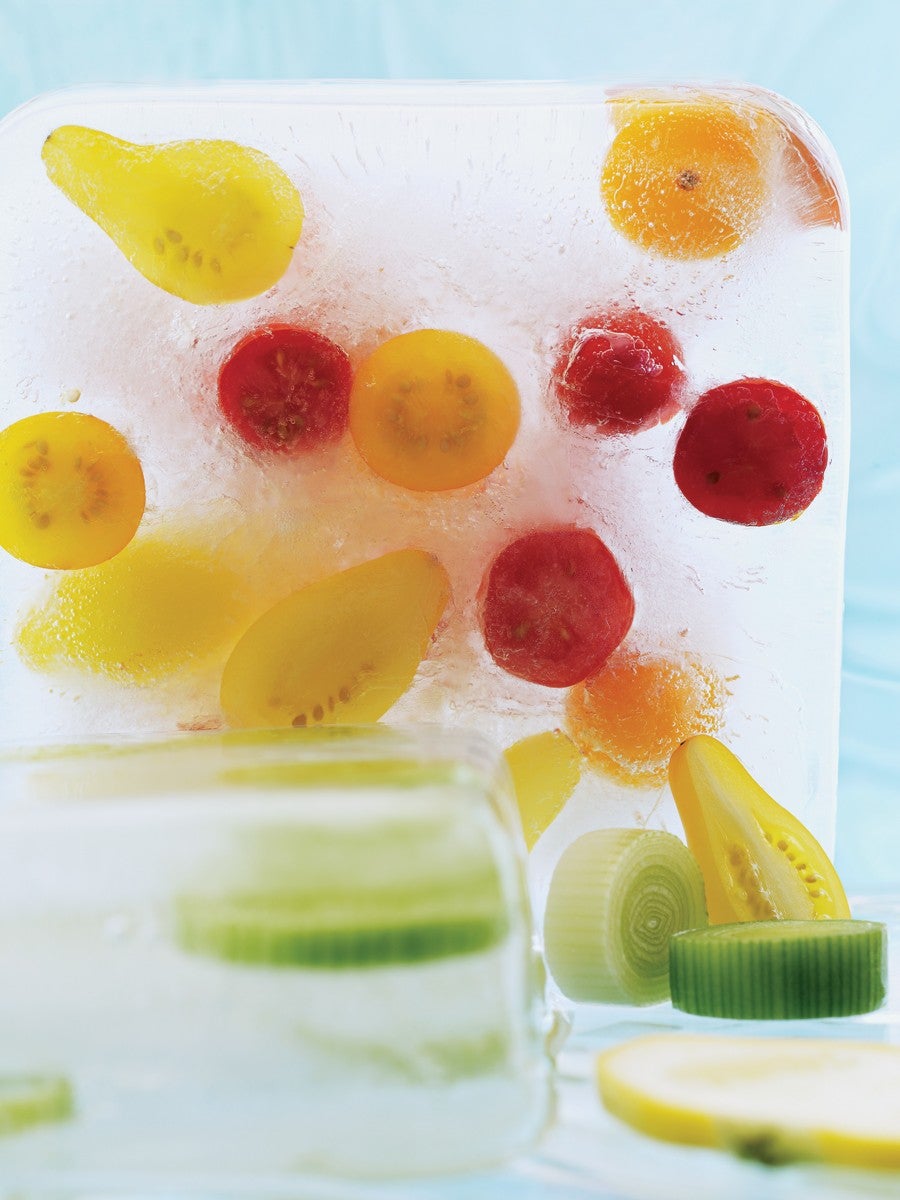Frozen Assets

Believe it or not, one of the best tools for preserving peak-season fruits and vegetables is already in your kitchen: it’s your freezer. So pile that farmers’ market basket high or plan a trip to the roadside stand. From ripe, ready-to-use produce to frozen dishes you can thaw, heat, and serve, there’s plenty to put in cold storage for a winter day.
LEEKS
Freezing tips: Trim tough dark green leaves from leeks, and cut white and pale green parts into 1/2-inch-thick rounds. Wash rounds well in cold water to remove any grit. Drain, and pat dry. Line baking sheet with parchment or wax paper, and arrange leek rounds in single layer on prepared baking sheet. Freeze. When frozen, transfer to resealable plastic bags.
Thawing tips: Thaw, and use as you would fresh leeks.
SQUASH
Freezing tips: Cut zucchini, yellow squash, or pattypan squash into 1/2-inch-thick slices. Bring large pot of salted water to a boil. Drop squash in boiling water, and blanch 3 minutes. Drain, and rinse under cold water to stop cooking. Cool, pat dry with paper towels, and spread on baking sheet lined with parchment or wax paper. Freeze, then transfer squash to 1/2-gallon resealable plastic bags. The blanching and freezing technique also works for corn and all types of fresh beans.
Thawing tips: Thaw in a colander set over a bowl to catch any liquid. Discard liquid before using.
TOMATOES
Freezing tips: Line baking sheet with parchment or wax paper. Place whole tomatoes on baking sheet, set in freezer, and freeze until solid. Transfer frozen tomatoes to resealable plastic bags.
Thawing tips: When ready to use, thaw in colander set over a large bowl to catch juices. Once thawed, peel tomatoes, if desired, and use both tomatoes and liquid the way you would whole or chopped canned tomatoes.
FRESH HERBS
Freezing tips: Pulse 6 cups fresh herbs (cilantro, basil, sage, or tarragon) in food processor until finely chopped, adding 1/4 cup water to make herbs easy to spoon out. Spoon 2 Tbs. into ice cube trays. Top with water, and freeze. Unmold, and store herb cubes in resealable plastic bags.
Thawing tips: Thaw, and stir into dips and dressings, or add frozen cubes directly to soups, sauces, or stews.
STONE FRUIT, BERRIES, OR FIGS
Freezing tips: Line baking sheet with parchment or wax paper. Slice plums, apricots, nectarines, peaches, or figs in half. Remove all pits, and peel peaches (other stone fruits don’t need peeling). Arrange prepped fruit cut-side up on prepared baking sheet, or arrange berries so that they are not touching one another on baking sheet. Freeze. Transfer to resealable plastic bags to store.
Thawing tips: Spread on baking sheet to thaw so that fruit retains its shape.
The Deep Freeze Done Right
Follow these steps for perfect results when freezing fresh produce.
Wash and dry well
Pat away excess moisture to prevent ice crystals from forming on fruits and vegetables.
Spread in a single layer
On a baking sheet lined with parchment or wax paper, arrange fruits and vegetables in a single layer so that they are not touching. This cuts down on ice-crystal formation. Individually frozen fruits and vegetables are also easier to thaw and use.
Bag it and Tag it
Label and date resealable plastic bags. Put frozen items in the bags, partially seal, and squeeze out any air to prevent freezer burn, then seal bags completely. (You can also do this with a vacuum sealer.) Lay flat in the freezer to maximize space.